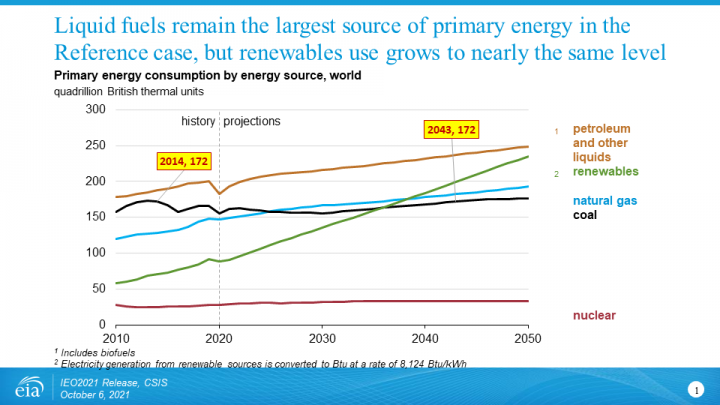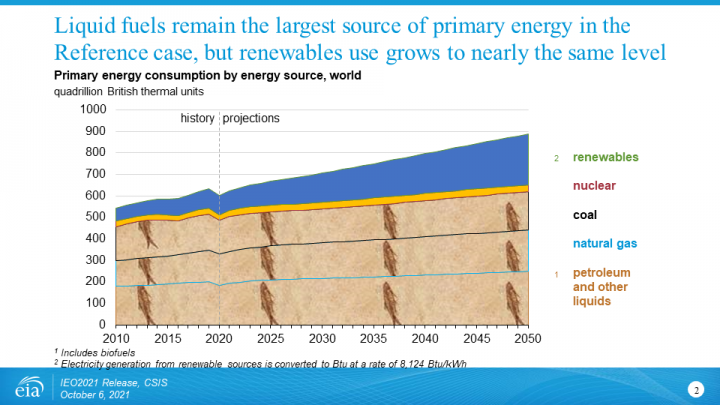https://wattsupwiththat.com/2021/10/06/eia-renewables-no-longer-expected-to-be-1-by-2050/
by David Middleton
In the Energy Information Administration’s (EIA) 2020 International Energy Outlook, renewables (including hydroelectric) were forecast to surpass petroleum and other liquid fuels as the world’s leading source of primary energy. This is commonly referred to as the “energy transition” from fossil fuels to unicorn dust.

Since the consumption of fossil fuels and nuclear power were actually forecasted to continue to grow, there would be no actual transition and Inigo Montoya would say…

Today’s release of the 2021 International Energy Outlook no longer forecasts renewables taking the lead before 2050…

Note: Petroleum and other liquids includes biofuels
OCTOBER 6, 2021
EIA projects accelerating renewable consumption and steady liquid fuels growth to 2050Today we released our International Energy Outlook 2021 (IEO2021). In the IEO2021 Reference case, which assumes current laws and regulations, we project that strong economic growth and growing populations will drive increases in global energy-related carbon dioxide emissions and energy consumption through 2050. Much of the increase in energy consumption will be met with liquid fuels and renewable energy sources. Natural gas- and coal-fired generation technologies as well as the emerging use of batteries will also prompt increased consumption.
Some key findings of IEO2021 include:
If current policy and technology trends continue, global energy consumption and energy-related carbon dioxide emissions will increase through 2050 as a result of population and economic growth.
The industrial and transportation sectors will largely drive the increase in energy consumption. Electric vehicle sales will grow through 2050, causing the internal combustion engine fleet to peak in 2023 for countries that are members of the Organization for Economic Cooperation and Development (OECD) and in 2038 globally. Despite this projected growth in electric vehicle sales, the continued growth in energy consumption will cause global energy-related carbon dioxide emissions to rise through 2050 according to our IEO2021 Reference case.[…]
Principal contributor: Michelle Bowman
As an “added bonus” EIA now forecasts that coal consumption for energy will exceed its alleged 2014 peak by 2043…

And they continue to forecast that fossil fuels will continue to be the world’s dominant source of primary energy for many decades to come…



